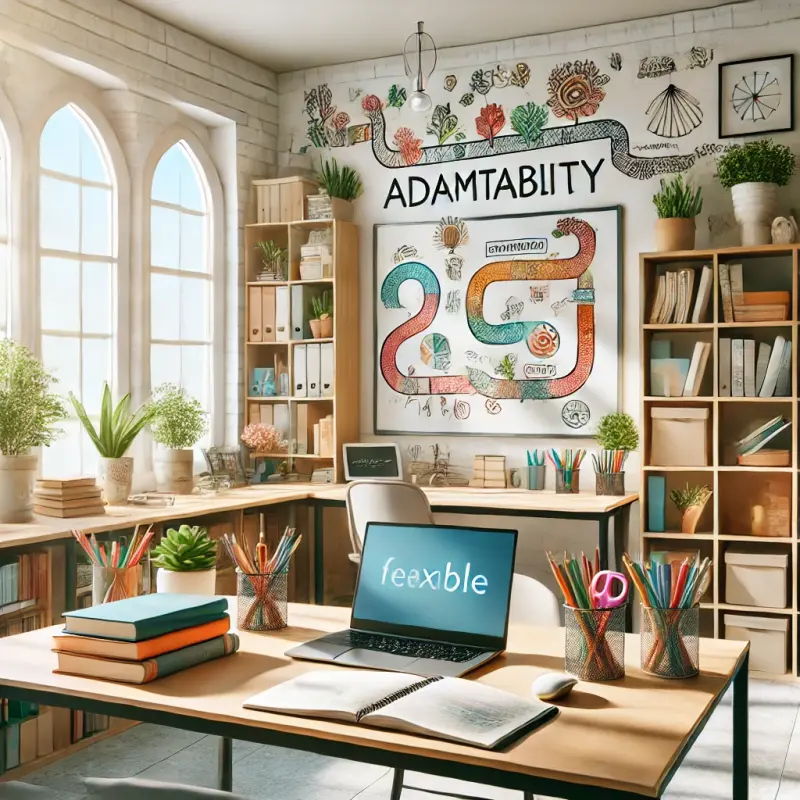Adapting the Learning Process to Current Capacities: Recommendations for Flexibility and Adaptation

In today’s dynamic educational landscape, the ability to adapt the learning process to meet current capabilities is essential for both educators and learners. Flexibility in education allows for a more personalized approach, ensuring that learning experiences are relevant and effective. This article explores the importance of adapting the learning process and provides practical recommendations for fostering flexibility and adaptability.
The Importance of Adaptability in Education
Adaptability in education is crucial for several reasons:
-
Diverse Learning Needs: Students come from various backgrounds and possess different learning styles. An adaptable approach allows educators to cater to these diverse needs effectively.
-
Changing Circumstances: Life events, health issues, and other unforeseen circumstances can impact a learner's ability to engage with educational content. Flexibility in the learning process ensures that students can continue their education regardless of external challenges.
-
Technological Advancements: The rapid evolution of technology offers new tools and resources for learning. Adapting to these changes allows educators to incorporate innovative methods that enhance the educational experience.
-
Improved Engagement: Flexible learning environments can increase student motivation and engagement, leading to better outcomes. When learners feel their needs are considered, they are more likely to participate actively.
Assessing Current Capacities
Before making adaptations to the learning process, it is vital to assess the current capacities of both students and educators. This assessment can include:
-
Self-Assessment Surveys: Use surveys to gather information about learners' strengths, weaknesses, preferences, and challenges. This information can guide the development of personalized learning plans.
-
Observations: Educators can observe student interactions, participation levels, and engagement with the material to identify areas that require adjustment.
-
Feedback Mechanisms: Implementing regular feedback mechanisms allows students to express their needs and preferences, providing valuable insights for adaptation.
Recommendations for Flexible Learning
1. Establish Clear Learning Goals
Setting clear and achievable learning goals is essential for effective adaptation. These goals should be:
- Specific: Clearly defined objectives help students understand what is expected of them.
- Measurable: Ensure that goals can be assessed to track progress.
- Achievable: Goals should be realistic, considering the learner's current capacities.
- Relevant: Align goals with students' interests and real-world applications.
- Time-bound: Set deadlines to create a sense of urgency and encourage timely completion.
2. Utilize Diverse Teaching Methods
Incorporating various teaching methods can enhance flexibility and cater to different learning styles. Consider the following approaches:
- Blended Learning: Combine traditional classroom instruction with online resources, allowing students to learn at their own pace.
- Project-Based Learning: Engage students in real-world projects that promote collaboration, critical thinking, and problem-solving.
- Differentiated Instruction: Tailor teaching strategies to meet the needs of individual students, providing varied levels of support and challenge.
3. Create a Supportive Learning Environment
A supportive learning environment fosters adaptability. Here are some strategies to consider:
- Encourage Open Communication: Create an atmosphere where students feel comfortable expressing their thoughts, concerns, and suggestions.
- Offer Flexibility in Assessments: Allow students to demonstrate their knowledge through various formats, such as presentations, written reports, or creative projects.
- Provide Resources for Self-Directed Learning: Equip students with the tools and resources necessary for independent study, enabling them to take charge of their learning journey.
4. Implement Regular Check-Ins
Regular check-ins with students can provide valuable insights into their progress and well-being. This can include:
- One-on-One Meetings: Schedule individual meetings to discuss goals, challenges, and successes. This personal interaction can strengthen the educator-student relationship.
- Group Discussions: Facilitate group discussions to encourage peer support and collaboration. Students can share their experiences and learn from one another.
- Progress Reviews: Conduct periodic reviews of students’ work and progress, allowing for adjustments to learning plans as needed.
5. Leverage Technology
Technology can enhance flexibility in the learning process. Consider the following tools:
- Learning Management Systems (LMS): Use LMS platforms to organize course materials, track progress, and facilitate communication between students and educators.
- Interactive Learning Tools: Incorporate interactive tools such as quizzes, polls, and simulations to engage students and enhance understanding.
- Online Collaboration Platforms: Utilize online platforms for group work and collaboration, allowing students to connect and share ideas regardless of their location.
6. Encourage a Growth Mindset
Fostering a growth mindset among students can enhance their ability to adapt to challenges. This can be achieved by:
- Promoting Resilience: Encourage students to view setbacks as opportunities for growth and learning. Share stories of perseverance and success to inspire them.
- Celebrating Effort: Recognize and celebrate students’ efforts and progress, rather than solely focusing on outcomes. This reinforces the idea that hard work leads to improvement.
7. Provide Professional Development for Educators
Educators must also be equipped with the skills and knowledge to adapt their teaching methods. Consider offering:
- Training Workshops: Provide professional development opportunities focused on adaptive teaching strategies and the use of technology in the classroom.
- Mentorship Programs: Pair experienced educators with those seeking to enhance their adaptability skills, fostering a culture of collaboration and support.
Conclusion
Adapting the learning process to current capabilities is essential for fostering an inclusive and effective educational environment. By assessing the needs of students, setting clear goals, utilizing diverse teaching methods, and leveraging technology, educators can create a flexible learning framework that meets the unique needs of each learner. Emphasizing adaptability not only improves student engagement and motivation but also equips them with the skills necessary to navigate an ever-changing world. Embrace the power of flexibility in education and unlock the potential for meaningful learning experiences.
Articles
Join our mailing list for notifications about the newest and most engaging articles sent straight to your email.